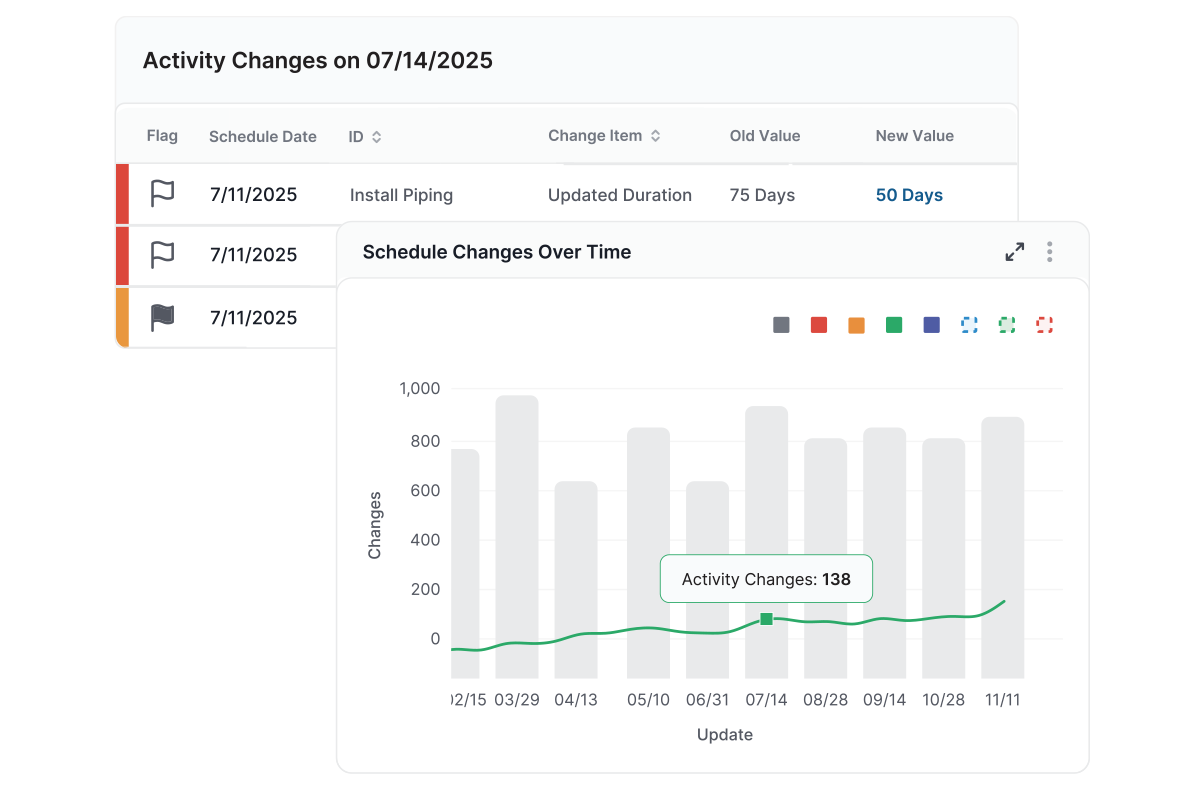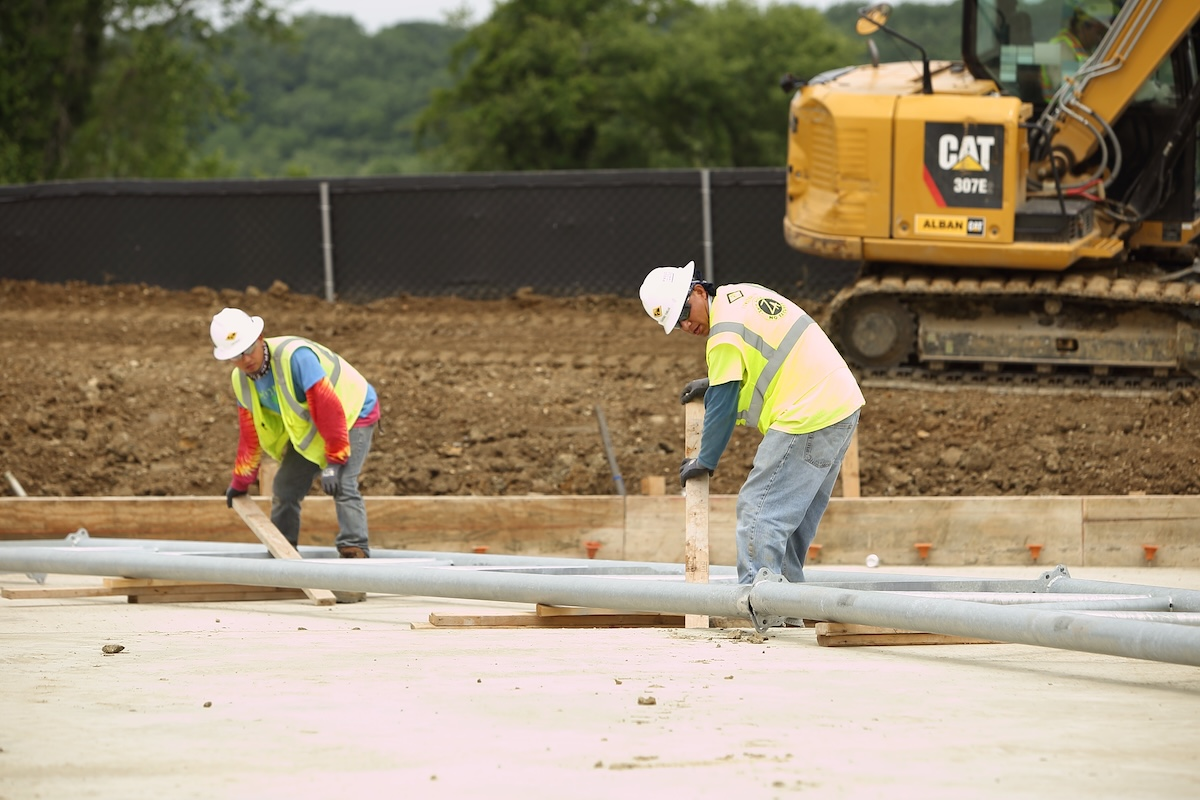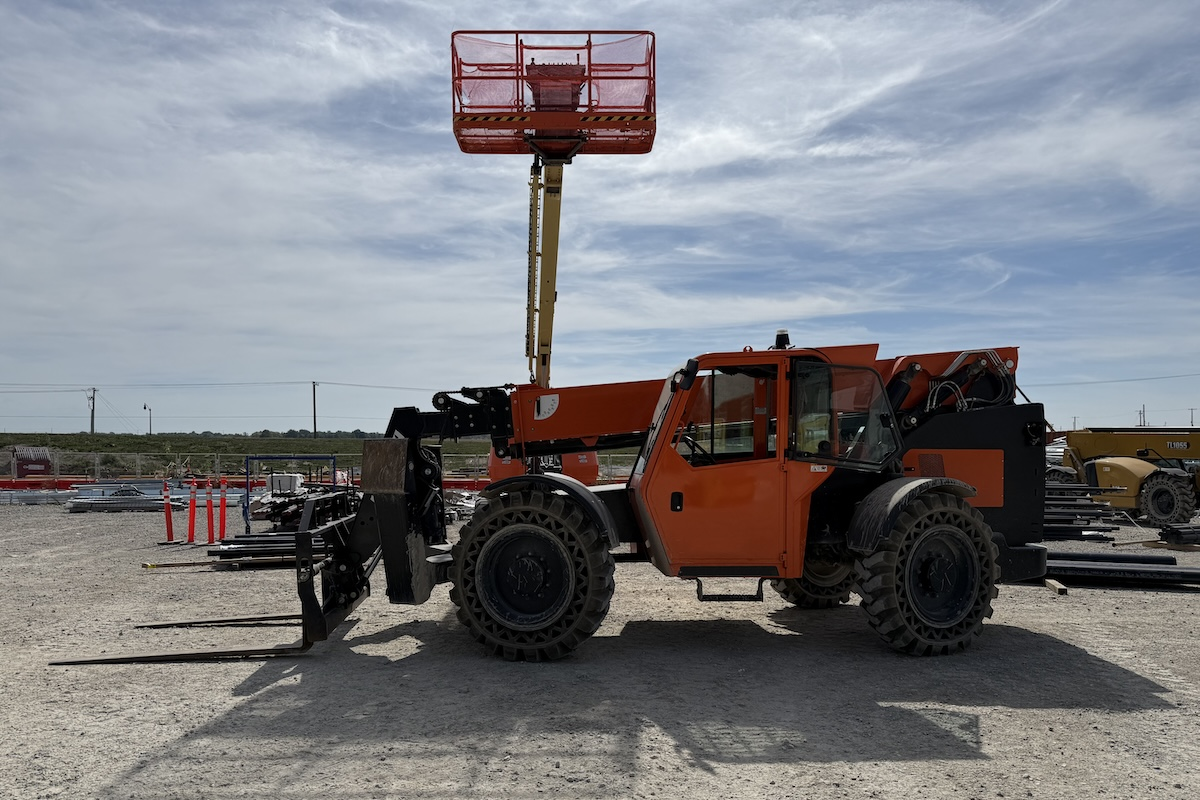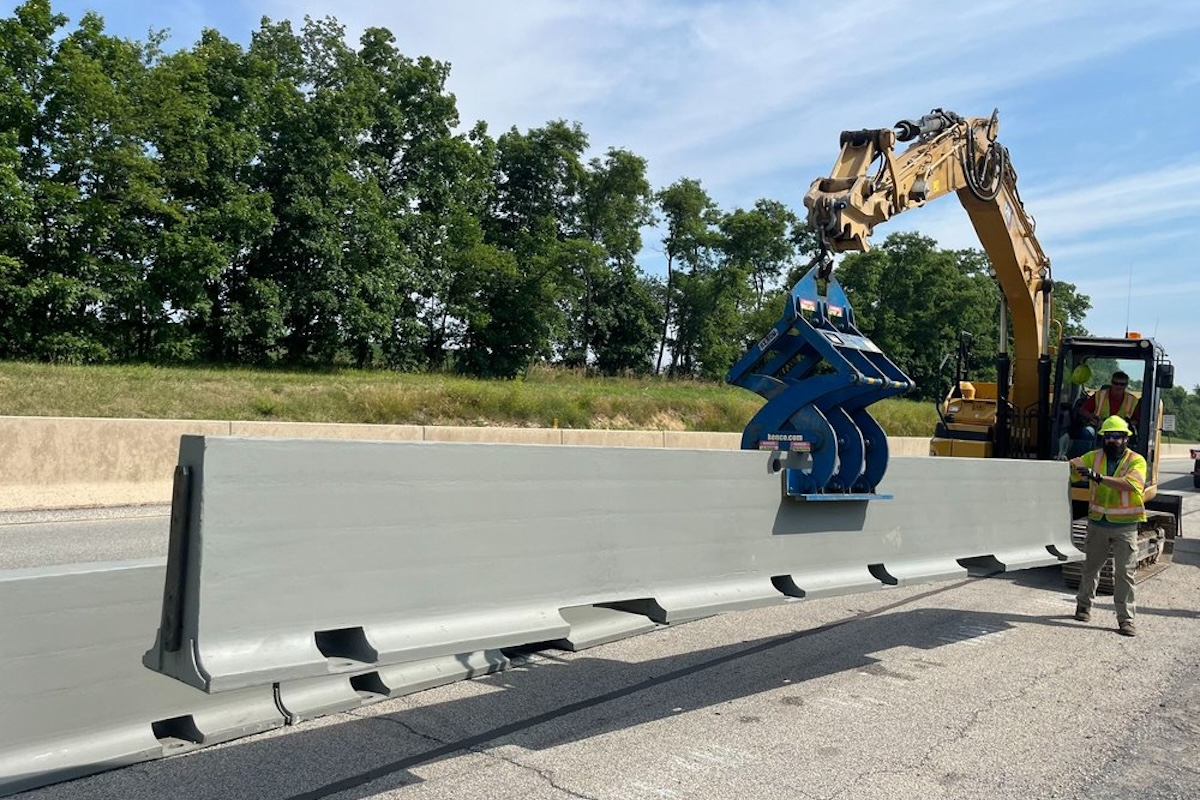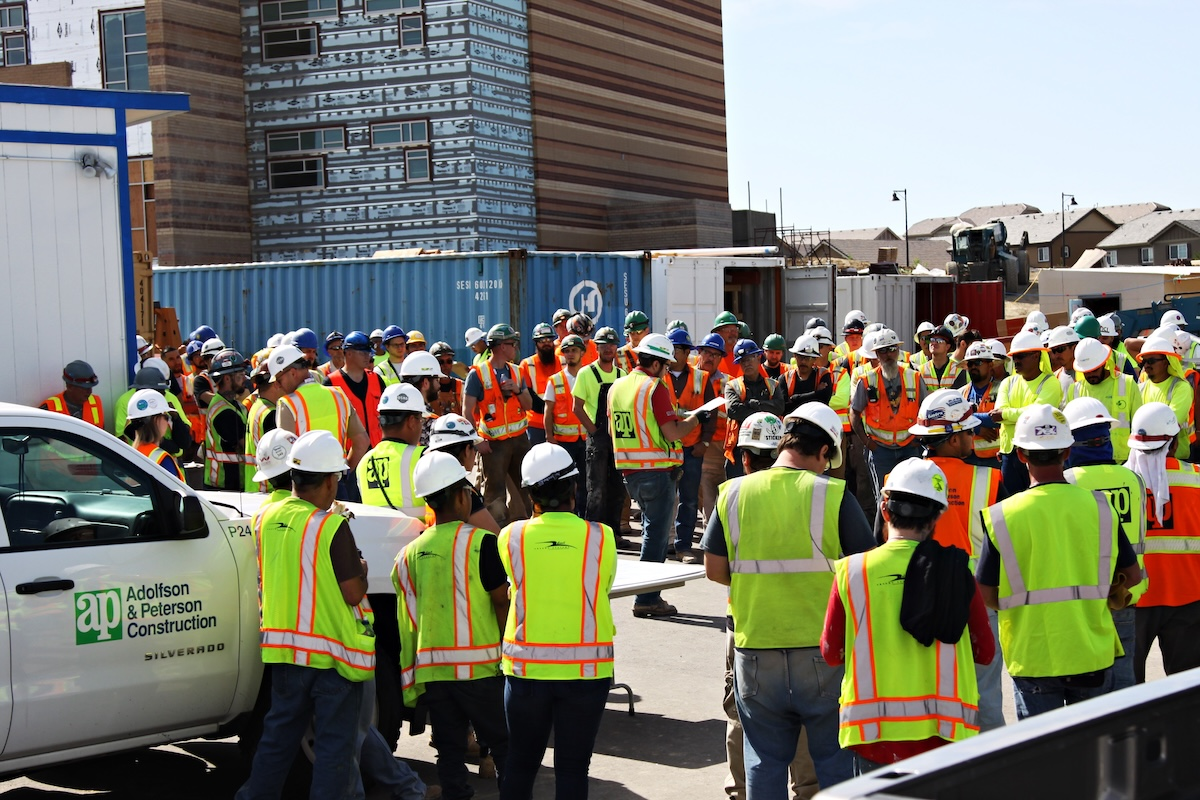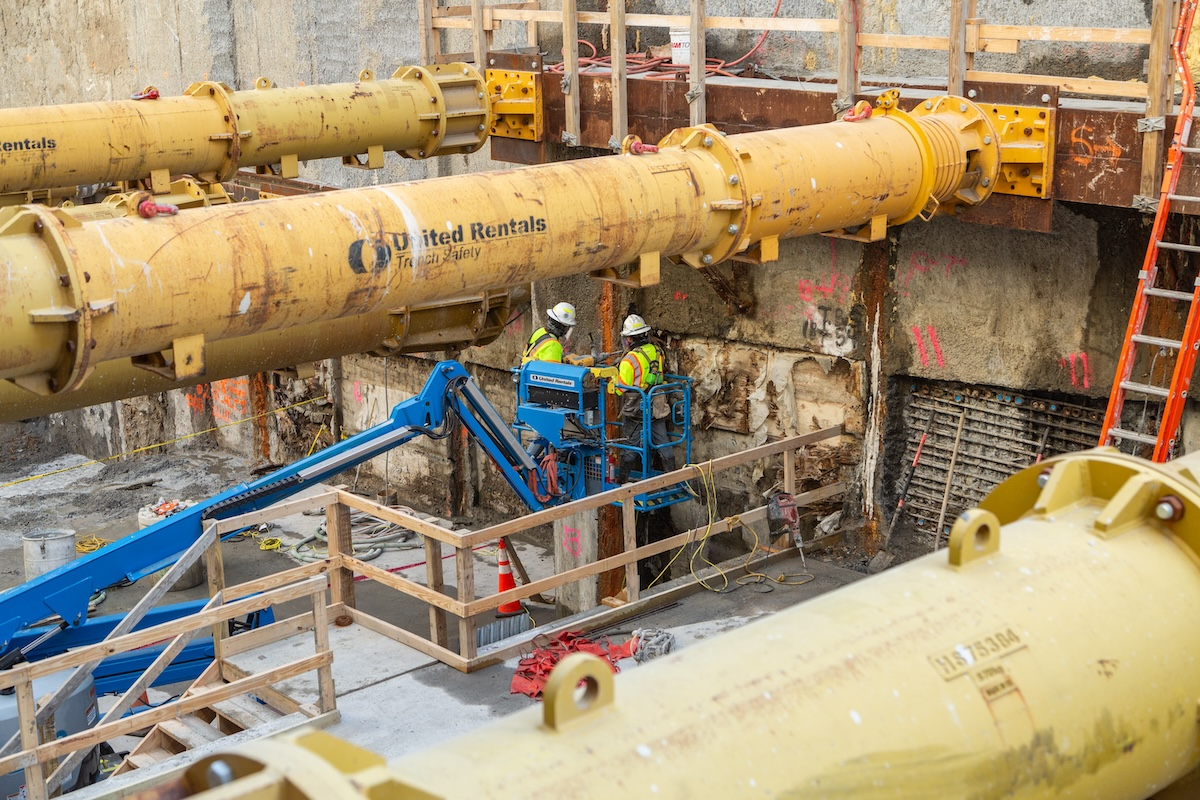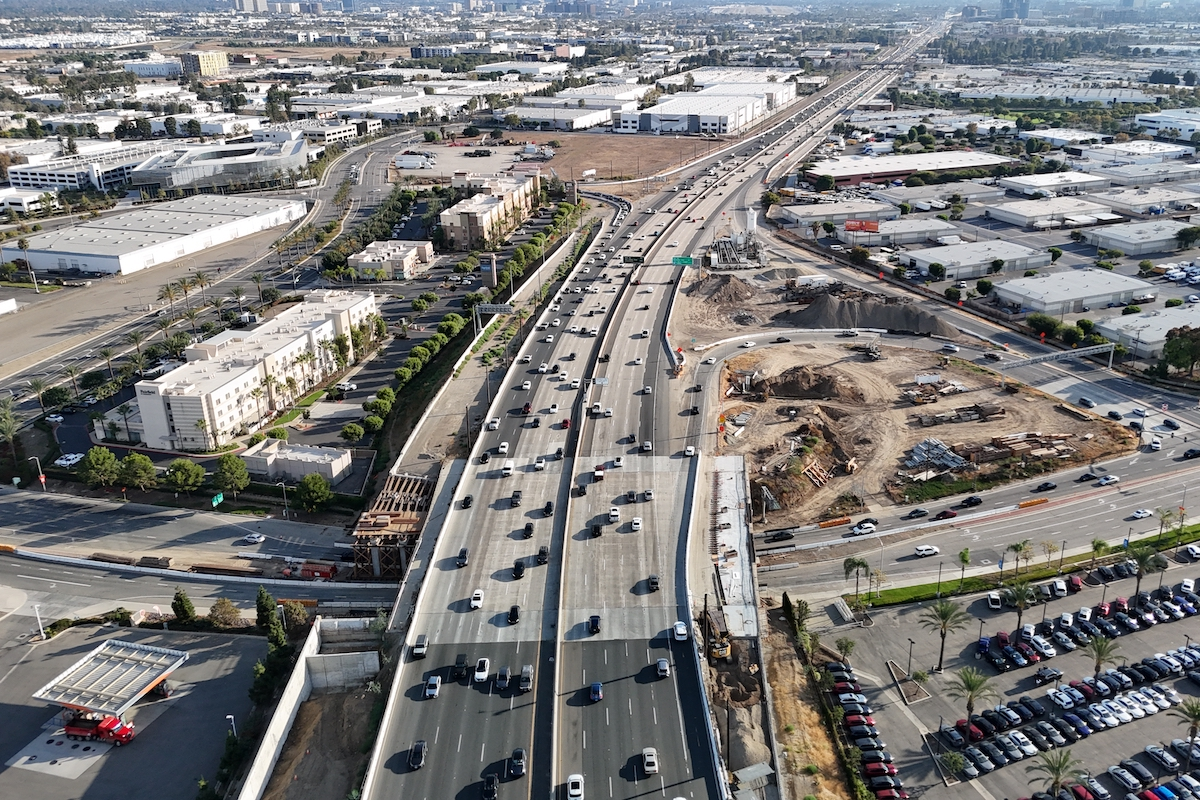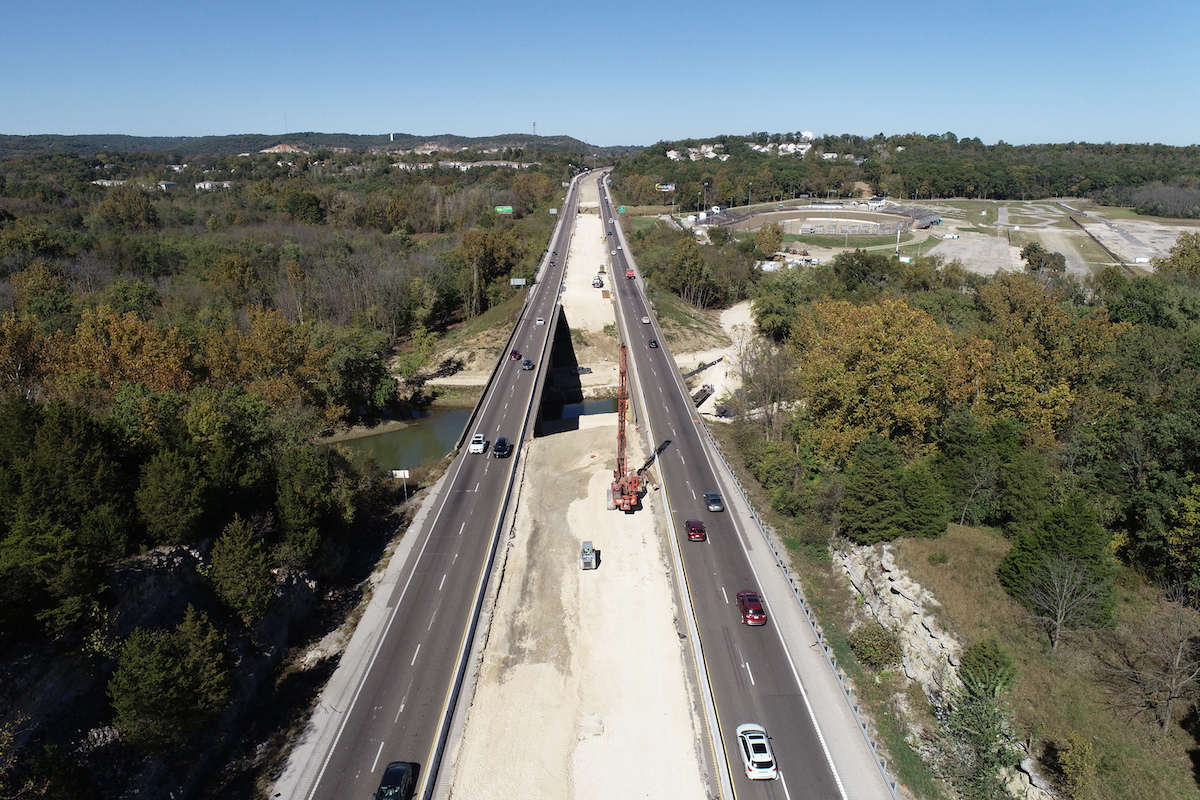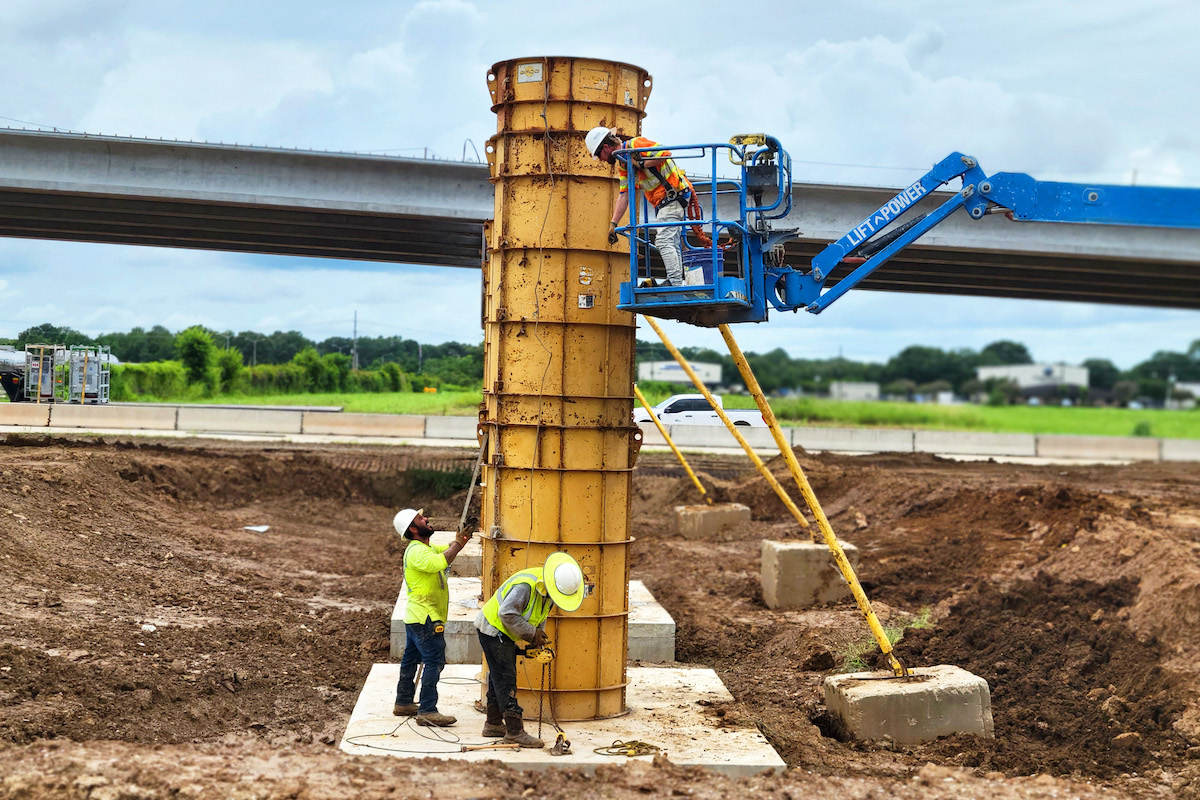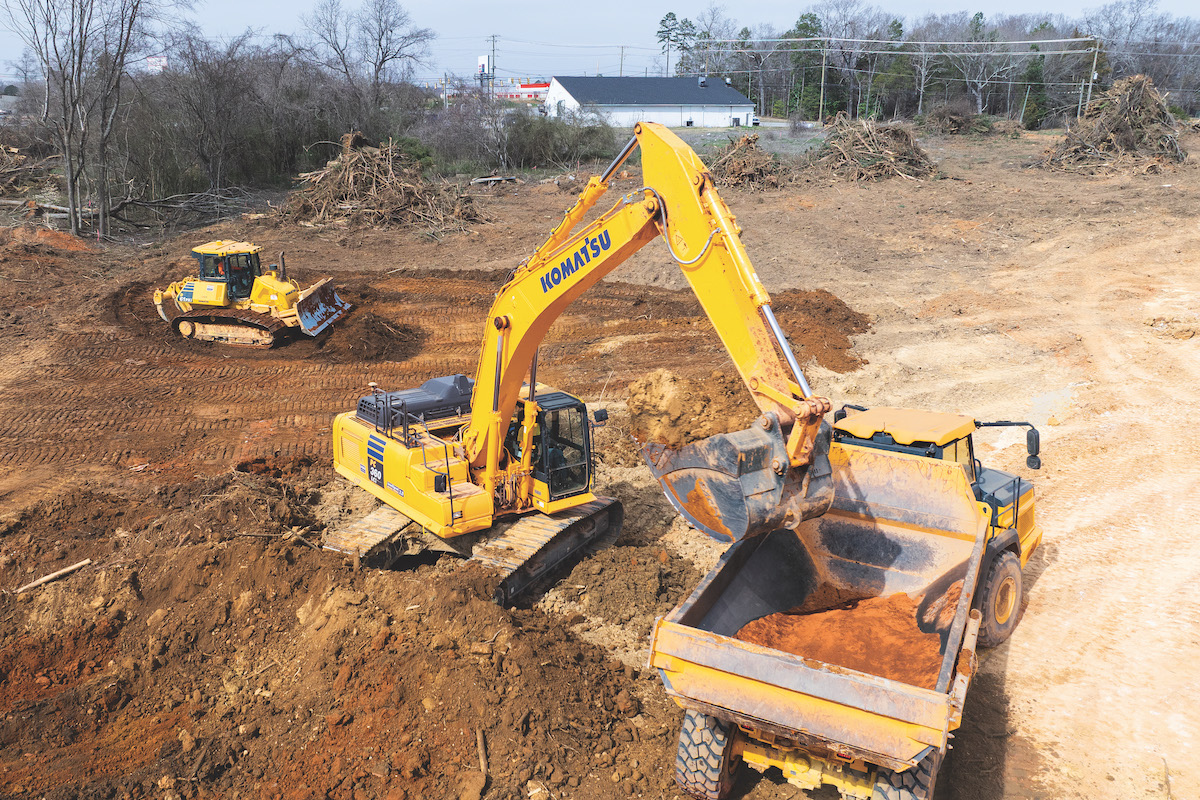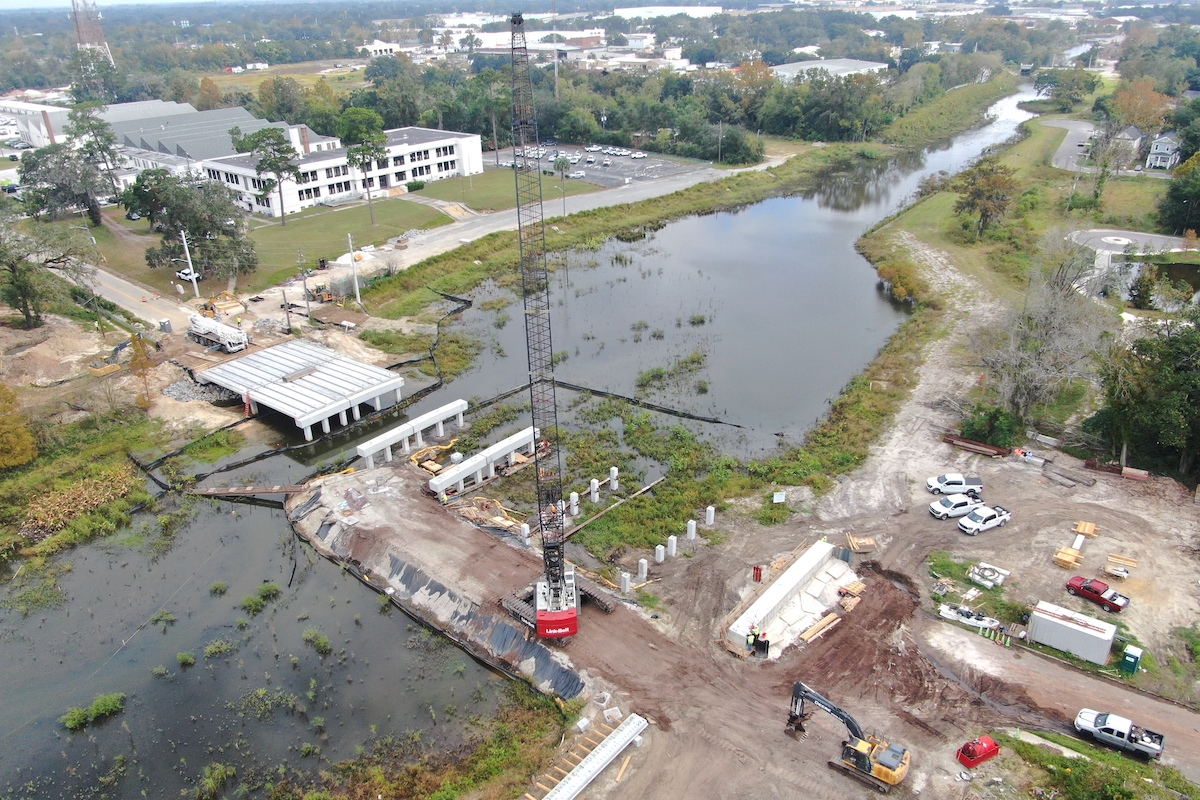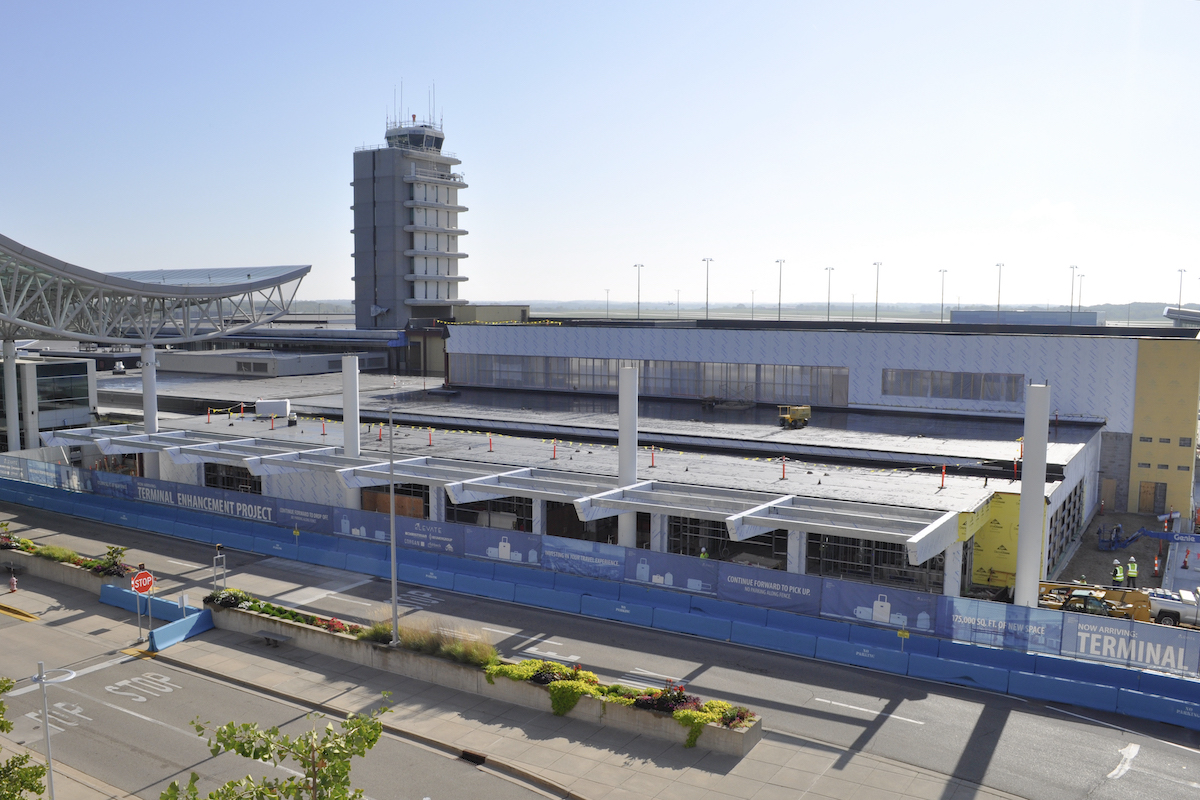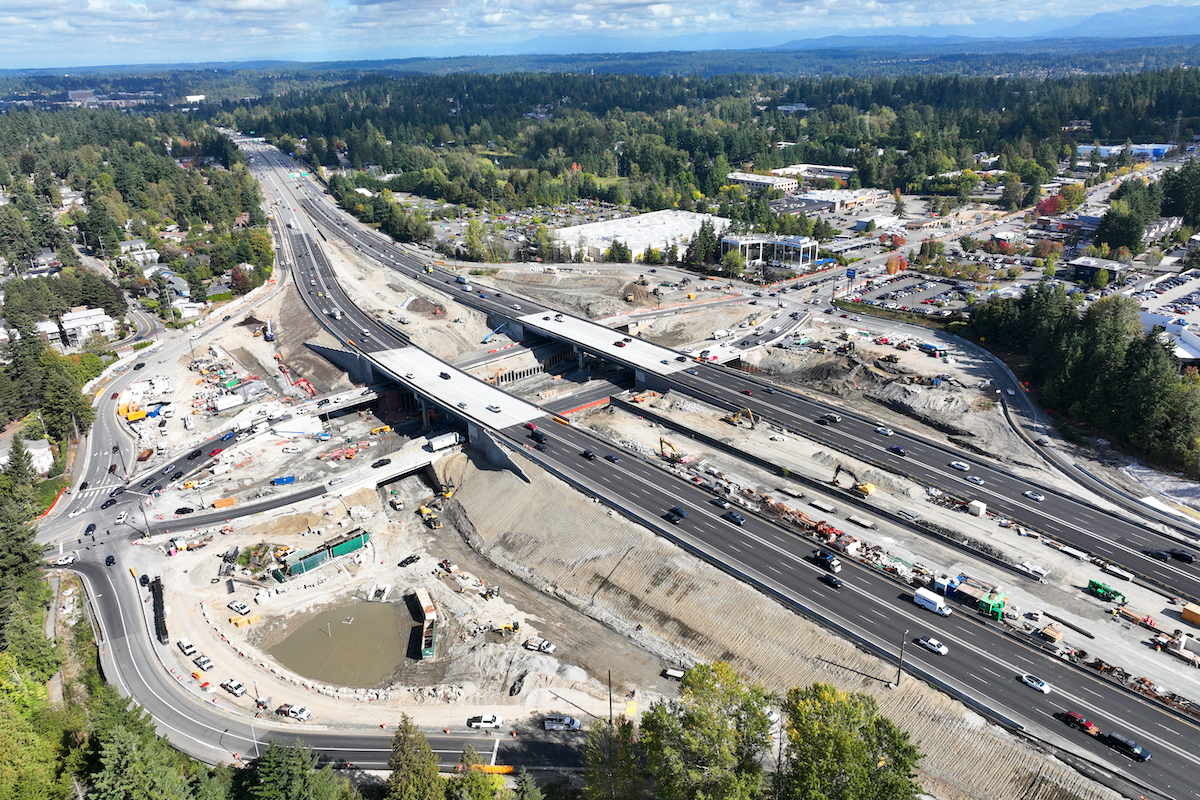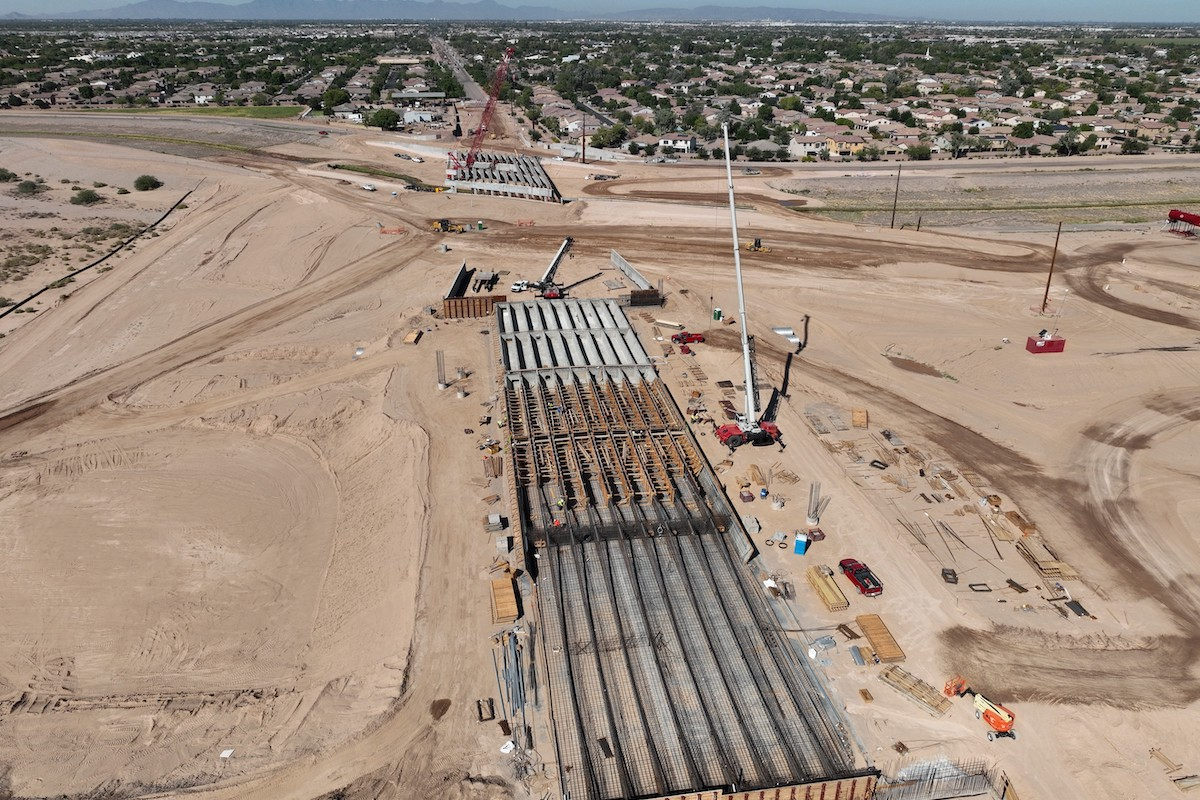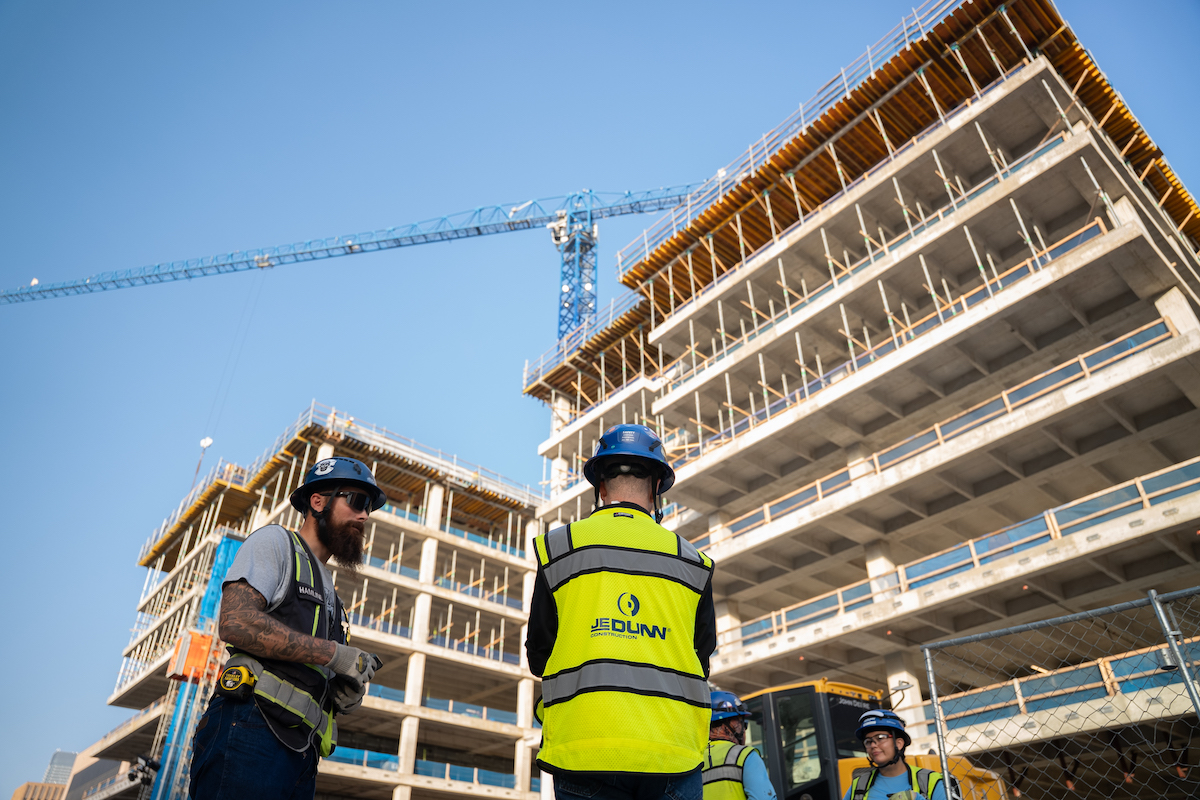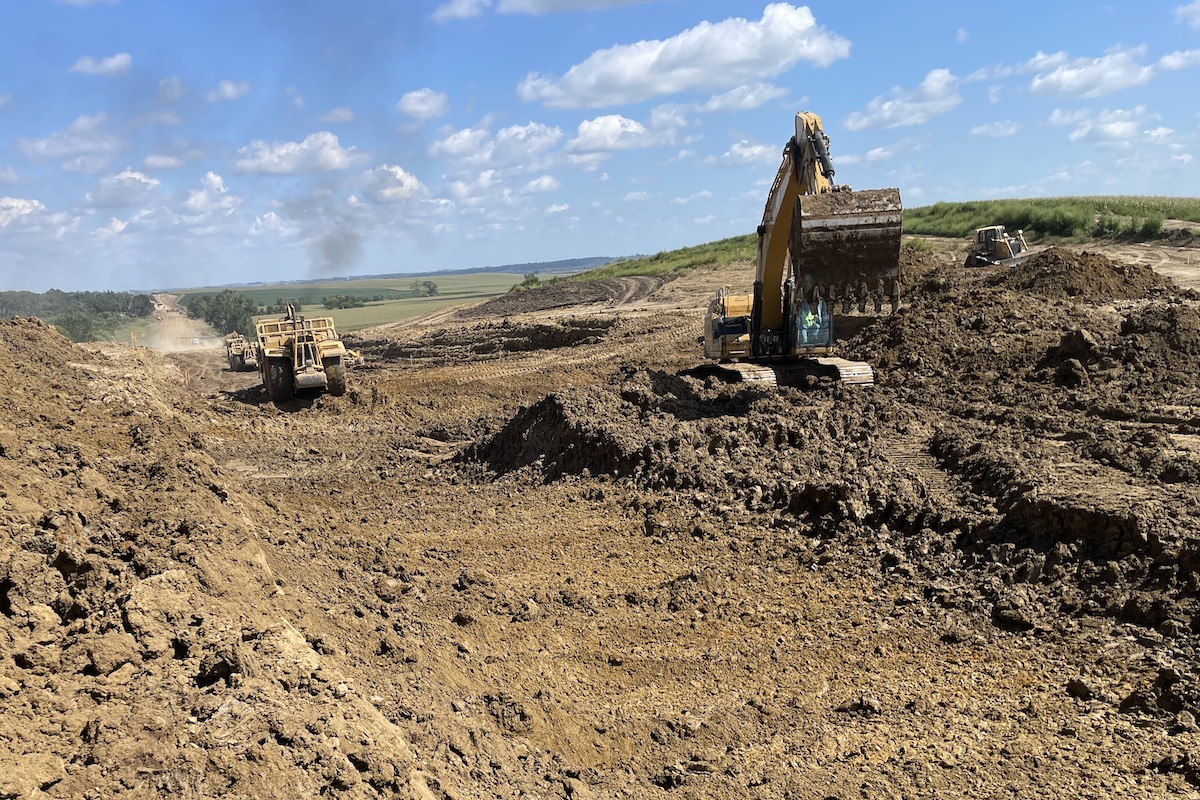One of the main ports of entry for goods crossing from Mexico into America is in Pharr, Texas, part of Hidalgo County, and the Rio Grande Valley. Five miles north of the border, the Texas Department of Transportation (TxDOT) is nearing the conclusion of the I-2/I-69C Interchange Project.
The interchange is part of one of the busiest traffic areas in the Rio Grande Valley, causing congestion on I-2 in the morning and evening rush hours.
The interchange and roadway can only sufficiently accommodate some of the traffic. The 2025 projected average daily traffic is approximately 140,000 along both directions of I-2 and 110,000 on I-69C. The Rio Grande Valley is also experiencing great growth in terms of population and business. In fact, SpaceX recently opened a facility in the area.
"We must improve the infrastructure in this area," said Tarso Gobbi, a Project Manager at Dragados. The company and Pulice are the integrated joint venture serving as the general contractor on the design-build project. Pulice is a subsidiary of Dragados. Gobbi is overseeing the project and has been involved since the beginning of the construction phase.
"The project was planned many years ago, as it was clear that I-2 needed to be widened to increase capacity and accommodate large trucks," Gobbi said.
Due to the congestion on I-2, some traffic — including trucks — exits the interstate and uses the adjacent roads. The city roads were not designed to handle the loads, and the excess traffic is leading to multiple issues. These include gridlock on local streets in the surrounding cities. Also, the city's extra traffic impacts residents' overall quality of life through increased noise levels and other factors.
The I-2/I-69C Interchange is undergoing full reconstruction in what will be considered one of the most significant investments in the area.
According to the Dragados-Pulice Joint Venture website, the 7.8-mile project improvements include:
- Full reconstruction of the I-2/I-69C Interchange to include two-lane direct connectors in all four directions
- Reconstruction and/or widening of the I-2 general purpose lanes from six to eight lanes (four in each direction)
- Operational improvements, including the reconfiguration of main lane ramps on I-2 from 2nd Street to FM 2557 (S. Steward Road) and improvements to the approaches and departures to and from the direct connectors
The old interchange included two intersecting four single-lane flyovers. On the new interchange, there will be additional lanes and widened connectors, which are expected to improve traffic flow.
The I-2/I-69C Interchange Project began in the winter of 2020. At that time, supply chain issues were rampant. While the supply chain is in mostly solid shape today, there continue to be kinks that have impacted the job all the way up until early 2024.
Gobbi said that the team has managed to keep progressing on the project by “self-perform[ing] a significant amount of the work and com[ing] up with various solutions to navigate through various difficult challenges.”
“At Pulice, we have a lot of equipment,” said Rafael Hurtado, an Equipment Director with Pulice who has managed all the equipment on site. “If we didn't have our own equipment that we could bring from around the country, we would be behind schedule.”
The team also constructed three production plants within 5 miles of the project. Finding the locations was a significant challenge, according to Gobbi. At the plants, they produced concrete, asphalt, and cement treated base. One of the plants is near a railroad.
"We use railroad cars to transport concrete aggregates and sand," Gobbi said, "because it's a money saver and helps minimize logistics challenges." Along those same lines, the team has used super-long dump trucks to transport materials.
However, getting the materials — which includes approximately 340,000 tons of aggregates for concrete and asphalt to the site — still posed challenges. Each time a load is transported to the construction site, tickets are produced and given to the driver, who then hands it to the superintendent and quality person when they arrive on site.
The team turned to TruckIT, which according to the company, is a technology that "streamlines … trucking and material management operations by automating manual processes through electronic ticketing, dispatching, and real-time reporting." Andrew Lindsay, CEO of TruckIT, said in a recent article in the national section of Texas Contractor that a truck is "dispatched, tracked, redirected, and analyzed through mobile-enabled, cloud-based technology. The technology increases the transparency and predictability of material delivery, decreasing downtime and increasing resource utilization and profits."
"We saw an opportunity to get rid of paper," Hurtado said. "We weren't wasting time handing out paper and more importantly it kept tickets in the apps, which helped with reporting." He added that the technology improved efficiency, along with cutting costs and improving logistics.
The team has also turned to other technology, including telematics, to check and track equipment. Telematics has saved money and increased productivity, as machinery has been regularly available.
Another challenge the team faced was limited space to work. The densely urban space includes residential and business activities. The team had to install complicated structures such as straddle caps and bridge decks over I-2 and I-69C and build deep foundations to support tall structures. It is for this reason that Gobbi said that construction is about logistics.
The next challenge is along the same lines. The team had to work in an actively trafficked area while still allowing vehicles to pass.
"We regularly detoured and moved traffic so that we could build in small sections," Gobbi said. The many adjustments have been a challenge for the traveling public.
As noted above, Dragados is the parent company and Pulice is a subsidiary. The team is responsible for designing, constructing, and maintaining the I-2/I-69C Interchange Project. According to Gobbi, Pulice has a strong footprint for the project and is good at design. Dragados, he added, offers support in the financial and design aspects.
The team's expertise in roadway construction, design-build jobs, and overall maintenance encouraged them to go for the job. In addition, Pulice regularly works in and around the area.
All lanes were open to traffic in December 2024, and Gobbi anticipates the entire project will be completed in early 2025.
The Dragados-Pulice Joint Venture has enabled this project to progress despite challenges. When complete, the new I-2/I-69C Interchange will reduce travel time and improve mobility, safety, and traffic operations. Traffic congestion will be greatly reduced, and drivers will no longer sit in traffic, wasting time and polluting the area. Traffic will also be moved off city streets and onto the corridor.
- Owner: Texas Department of Transportation
- General Contractor: Dragados USA, New York, New York; Pulice Construction, Scottsdale, Arizona
- Designer: Michael Baker International, Pittsburgh, Pennsylvania
- Other Key Contractors: A.H. Beck Foundation Co., Converse, Texas; Traf-Tex, Houston, Texas; Ancortex, Dallas, Texas; IOC, Edinburg, Texas; Indus Road and Bridge, Dallas, Texas; JB Pinnacle, Houston, Texas; Izaguirre Construction, LLC, Weslaco, Texas Photos courtesy of Dragados-Pulice Joint Venture












